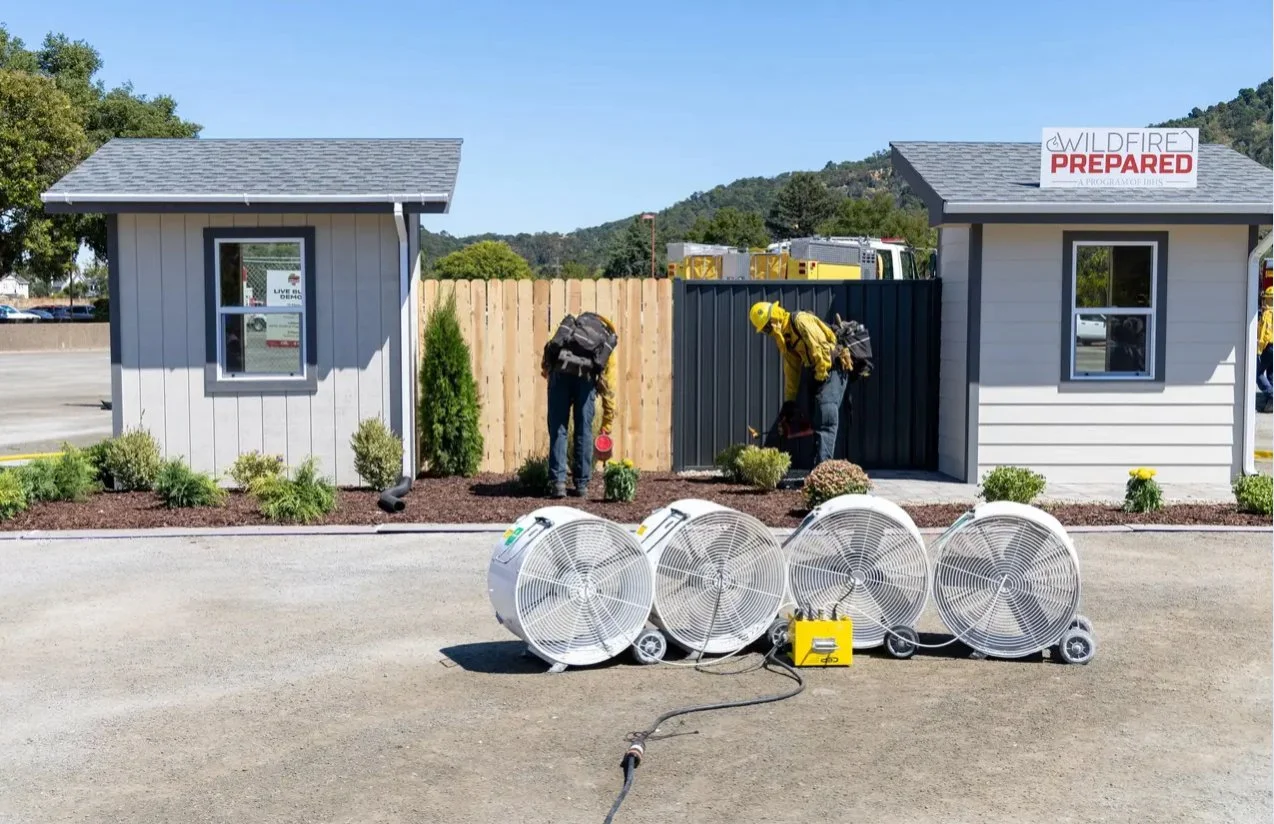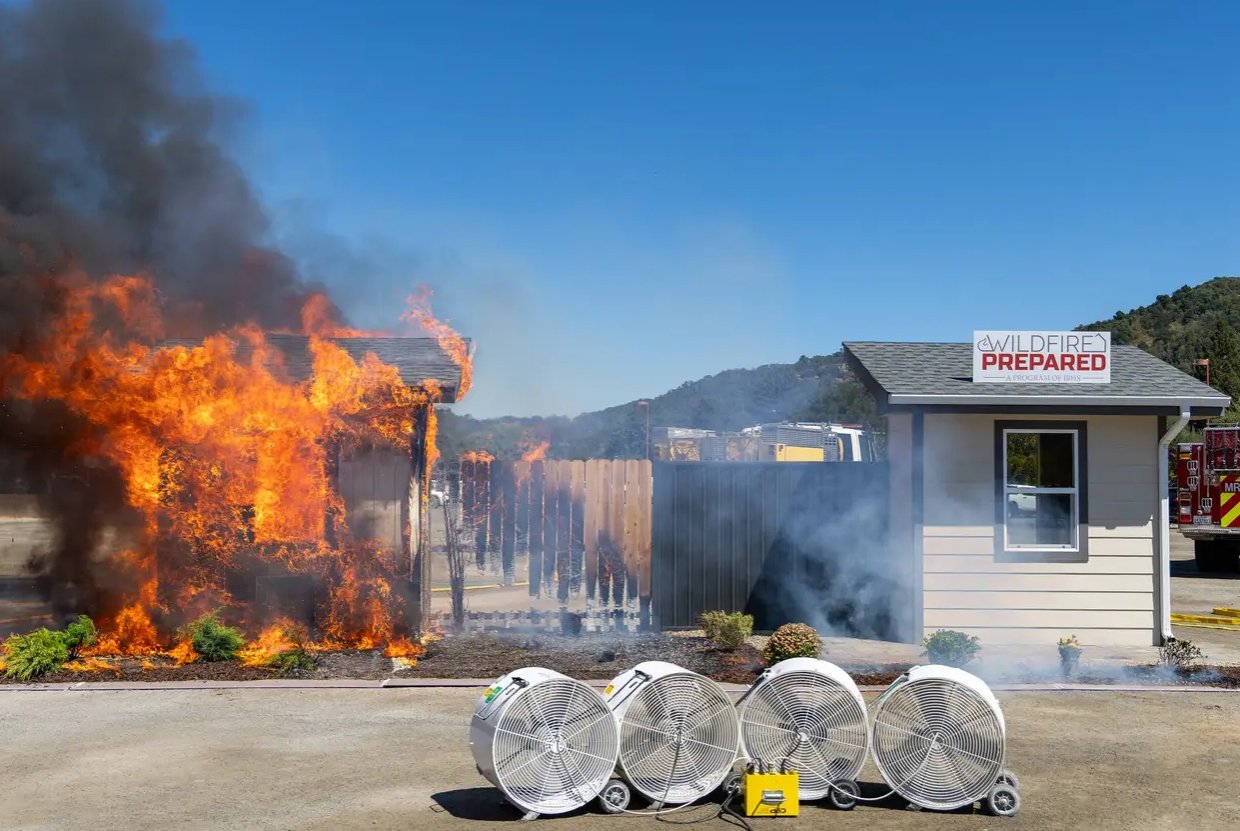What Is Home Hardening, Really?
(And How to Get Started Without Breaking the Bank)
You've probably heard the term home hardening tossed around in wildfire safety conversations but what does it actually mean? More importantly, how do you know if your home needs it?
What Is Home Hardening?
Home hardening is the process of making a home or business more resistant to wildfire damage by:
Reinforcing vulnerable areas.
Preventing embers from entering a structure.
Taking actions that limit radiant heat or direct flame contact during a wildfire.
It involves a combination of:
Using fire resistant or non-ignitable building materials.
Implementing specific structural upgrades.
Maintaining a clear area around your buildings.
It's about upgrading the most vulnerable parts of your structure so they're less likely to ignite, even if fire is burning nearby.
These are before and after photos from a demonstration conducted by the Insurance Institute for Business and Home Safety (IBHS).
The structure on the right is a Wildfire Prepared Home™ with Zone Zero clearance.
The structure on the left is not hardened. It has wood siding, ignitable plants in Zone Zero and non-compliant vents. All other conditions were equal when small fires were ignited in the bark, recreating embers landing near a home.
Why Embers Are the Real Threat
During wind driven wildfires, embers can travel miles ahead of the main flame front. Based on research, IBHS estimates that 90% of structures damaged or lost during wildfires were ignited by embers and not the main flame front of the fire. These embers can ignite dead leaves or debris on or next to a structure or they can find their way into homes through, for example:
Roof gaps
Vents
Siding cracks
Some Steps To Address These Areas:
Home hardening doesn't require tearing your house down or starting from scratch. And many of the materials that can be used in home hardening are similar in price to non-compliant materials. Here are some examples:
Roof
Make sure there are no gaps in your roof structure. Seal them with approved, non-ignitable material.
A Class A fire-rated roof is essential. Replace wood shakes with composite, metal, or tile.
Vents
Install approved 1/8" metal mesh screens in front of or behind existing non-screened vents
Upgrade to Wildland Urban Interface (WUI) compliant ember-resistant vents.
Siding and Eaves
Seal gaps and cracks larger than 1/8”
Replace combustible siding (like wood) with non-combustible material when possible - masonry board or stucco for example
So, where to start?
How about with a Wildfire Risk Assessment!
Every home is different. The first step to smart wildfire preparedness is understanding where your property’s vulnerabilities are.
At Matrix Fire Solutions we offer on-site, detailed home hardening and defensible space assessments from the unique combined perspective of a 30-year CAL FIRE Chief and a 40-year Home Builder. We tailor your assessment to your property's layout, condition, and wildfire risk, explaining as we go what we see and what we recommend. And, we listen.
You’re assessment is followed by a comprehensive but easy-to-follow Action Plan as well as recommendations for trusted, licensed contractors and service providers to complete the work as needed. It’s clear and concise; no fluff, no guesswork.
Final Thoughts
Home hardening is one of the most powerful tools you have to protect your home from wildfire. It doesn't have to be expensive or overwhelming. With the right guidance, you can make smart upgrades that truly make a difference.
Need help getting started?
Contact us today to schedule your home hardening assessment.


